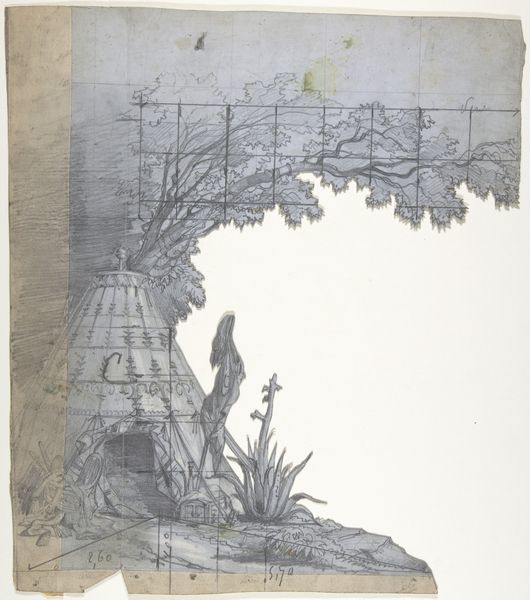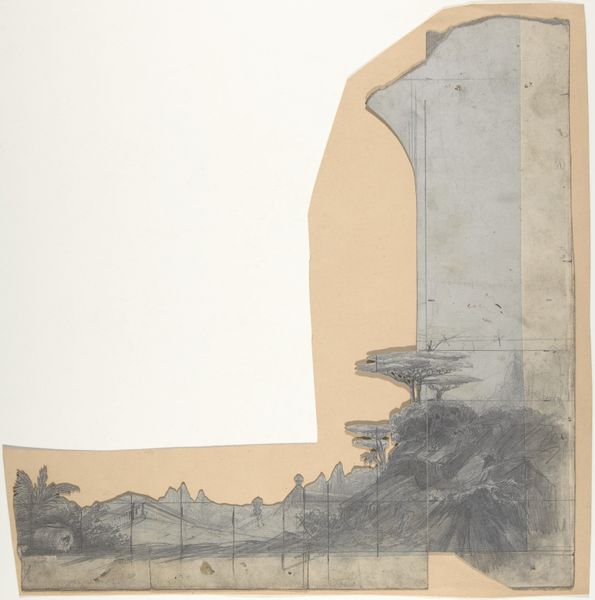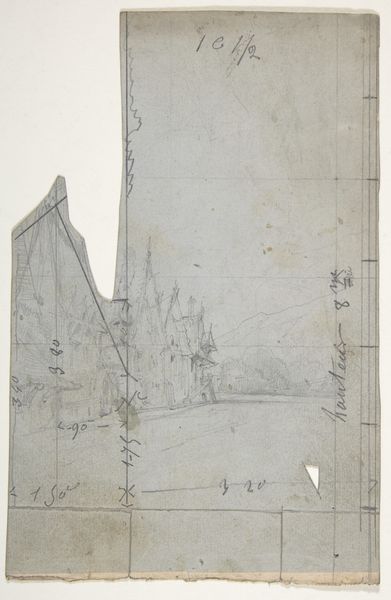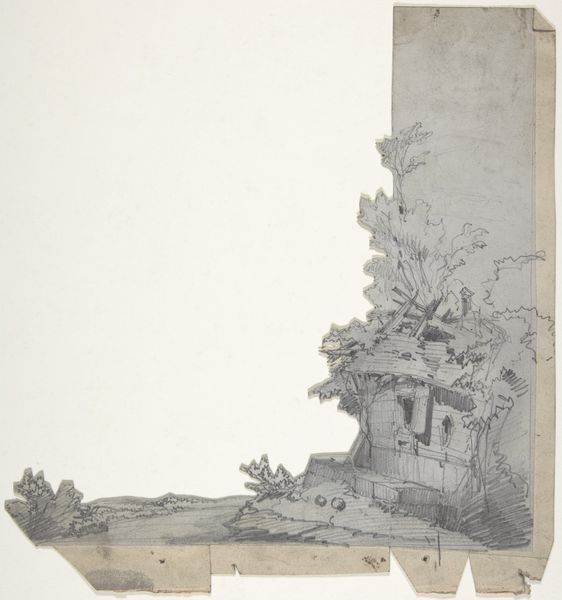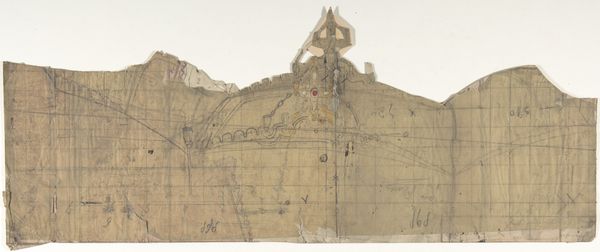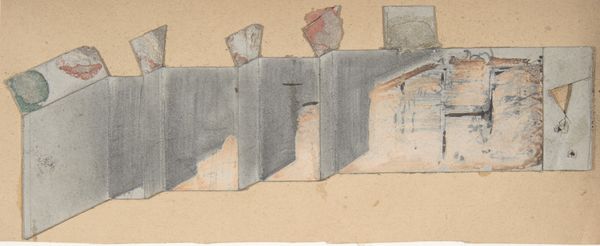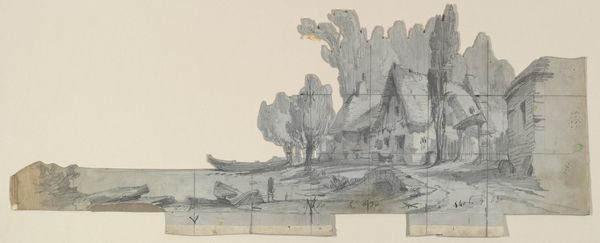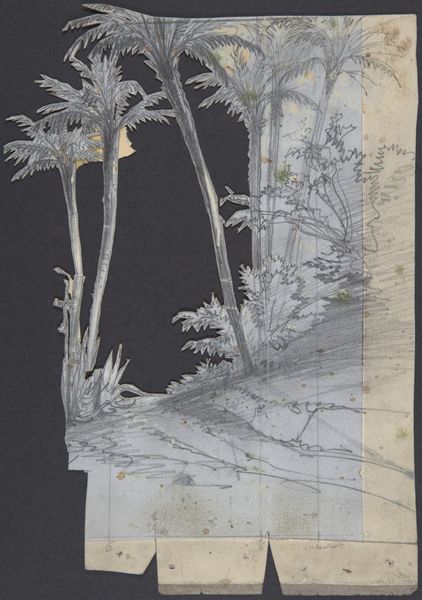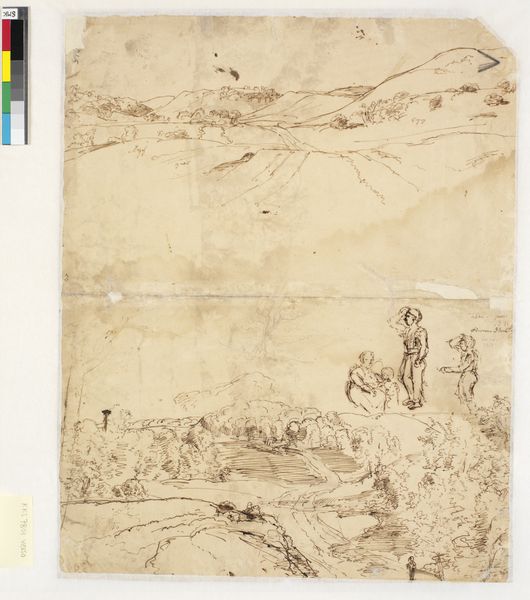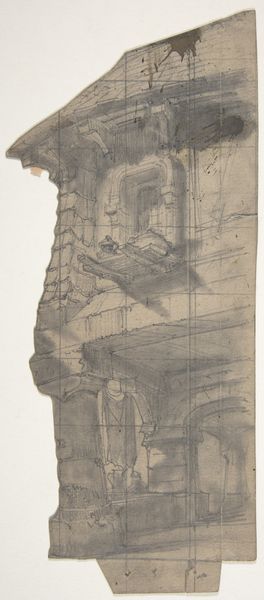
Design for a Stage Set at the Opéra, Paris: Tent and Overturned Wagon 1830 - 1890
0:00
0:00
Dimensions: Irregular sheet: 9 7/8 x 9 3/16 in. (25.1 x 23.4 cm)
Copyright: Public Domain
Editor: Here we have Eugène Cicéri's "Design for a Stage Set at the Opéra, Paris: Tent and Overturned Wagon," created between 1830 and 1890. It’s a drawing, currently held at the Met. The muted tones create quite a somber mood for a stage set, wouldn't you agree? What strikes you about the composition of this drawing? Curator: Certainly, the palette is restrained. What intrigues me first is the interplay of line and form. Note how the artist uses delicate lines to define the architecture of the tent, contrasting with the rougher, sketchier rendering of the overturned wagon and surrounding landscape. It is about control vs fluidity and geometry. Where does that take us? Editor: It brings out the chaotic nature of war - the controlled and precise architecture of the tent on a structured landscape, compared to the devastation represented by the overturned wagon and the rugged ground around. Almost two realities overlapping. Curator: Precisely! This tension speaks volumes. What could be seen to underpin the whole piece compositionally? Editor: Is it the grid? It feels like a tool for control or measurement, at odds with the scene depicted, while tying it all together? Curator: Yes! The grid imposes a structure, an order onto what otherwise would dissolve. One wonders what that tells us? We see that he grid both supports and dissects, doesn't it? Editor: It does. I hadn’t really considered that the grid was a meaningful artistic choice. I see how the artist is using form and line in a dialectic with each other, thank you. Curator: Indeed, exploring these elements gives us much.
Comments
No comments
Be the first to comment and join the conversation on the ultimate creative platform.
